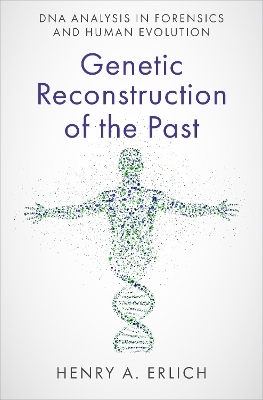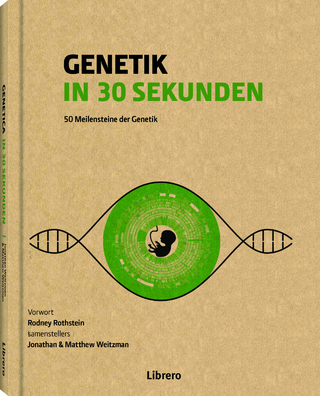
Genetic Reconstruction of the Past
Oxford University Press Inc (Verlag)
978-0-19-767536-6 (ISBN)
The unifying theme of the book is the recently developed capacity to use DNA sequence information to make inferences about historical events. Part One is a discussion of how DNA analysis can reconstruct the recent past, in particular, the events that transpired at the scene of a crime. Part Two is a discussion of the application of DNA analysis to reconstructing the ancient past, using DNA sequences from human samples as well as from fossil remains to study the evolution of the human species and the historical relationships among contemporary and extinct human populations. Erlich discuss how he, along with his colleagues at Cetus Corp in the mid-1980s developed the PCR (polymerase chain reaction) technology of specific DNA amplification, a method of synthesizing millions of copies of a specific targeted DNA sequence and applied it to address forensic and evolutionary questions. It is this capacity, that has transformed both forensic science and evolutionary biology and has led to both the identification-and exoneration-of criminal suspects and a deeper understanding of human evolution. These techniques, now widely used, were applied in the first DNA criminal case, the first exoneration case, and the first identification of a missing person. Discussions on the history and the many remaining contentious issues in forensic DNA analysis in Part One are organized around several specific criminal cases, while the book tries to convey the spirit of "doing science."
Henry A. Erlich is Research Emeritus at the Benioff UCSF Children's Hospital Oakland Research Institute. He received his B.A. in Biochemical Sciences from Harvard in 1965 and his Ph.D in Genetics from the University of Washington. He was a post-doctoral fellow in the Biology Department at Princeton University from 1972-75 and in the Immunology Department at the Stanford School of Medicine from 1975-79. He was Director of the Human Genetics Department at Cetus Corporation and Director of Human Genetics and VP of Exploratory Research at Roche Molecular Systems until 2013. He was a Senior Scientist at the Research Institute until 2021.
Preface
Introduction: The Stories DNA Tells
Part One: Reconstructing the Crime Scene
Chapter 1. All Rise: DNA Enters the Courtroom
Chapter 2. Deciding What the Jury Sees: DNA and Admissibility
Chapter 3. Exclusions and Exonerations: Justice for the Wrongfully Convicted
Chapter 4. The Earl Washington Jr. Case and the Problem with Mixtures
Chapter 5. The Weight of Evidence: Statistics and the Evolution of Forensic Genotyping
Chapter 6. Databases, Cold Hits, and Hot Button Issues
Chapter 7. DNA, Doggerel, and Race Cards: The OJ Simpson Trial
Chapter 8. Closure and Justice: Identifying the Missing
Part Two: Reconstructing the Ancient Past
Chapter 9. Allan Wilson, Molecular Evolution, and the Out of Africa Hypothesis
Chapter 10. DNA of the Dead: Sequencing Archaic Species and Ancient Remains
Chapter 11. Populations, Genes, and History
Chapter 12. Controversies and Contention in Interpreting the Past
Chapter 13. Ancestry and Genetics: What's Race Got to Do with It?
Appendix
| Erscheinungsdatum | 02.12.2023 |
|---|---|
| Verlagsort | New York |
| Sprache | englisch |
| Maße | 226 x 157 mm |
| Gewicht | 454 g |
| Themenwelt | Naturwissenschaften ► Biologie ► Genetik / Molekularbiologie |
| Naturwissenschaften ► Chemie ► Physikalische Chemie | |
| Sozialwissenschaften ► Pädagogik | |
| Sozialwissenschaften ► Politik / Verwaltung | |
| ISBN-10 | 0-19-767536-0 / 0197675360 |
| ISBN-13 | 978-0-19-767536-6 / 9780197675366 |
| Zustand | Neuware |
| Informationen gemäß Produktsicherheitsverordnung (GPSR) | |
| Haben Sie eine Frage zum Produkt? |
aus dem Bereich


